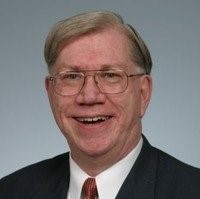Clearwater Credit Union, Missoula, MT, is involved with solutions to one of the most difficult challenges facing their community, the nation and the world: refugee immigration.
Every day this story moves from Afghans on the front page to Haitian migrants huddled under a bridge over the Rio Grande. Politicians pose and procrastinate while hundreds of private organizations, individuals and communities respond to this never-ending need for human relief. The temptation to stir up public fear is never far away.
This is the story of how Clearwater and its community joined to respond to this on-going human tragedy .
Founded in 1956 by eight police workers, Clearwater Credit Union is the second largest of Montana’s 47, with over $850 million in assets plus a $250 million mortgage servicing portfolio.
It is the state’s largest Community Development Financial Institution (CDFI).
In 1979 Missoula was a resettlement community for Hmong refugees from Southeast Asia, allies during the Vietnam war. Today, that community includes farmers, food service operators and active vendors in local open markets. The forty year history of this immigration experience is described in this 2016 article in the Missoulian:
While their contributions to the outdoor markets are perhaps most visible, first-generation Hmong immigrants and their offspring are bankers and real estate agents; decorated war heroes and high school valedictorians; sports standouts and chefs; entrepreneurs, business owners and probably a dozen other things around town.
The Need Arises
In 2016 the refugee resettlement needs rose again in Missoula with people from Syria, the Congo, Iraq and Eritrea trying to find a new place to raise families, often following harrowing escapes.
The turning point for the credit union and many in Missoula was the picture of Alan Kurdi, a three year old lying on an island beach off the coast of Turkey. His mother and brother also perished-all Kurdish refugees hoping, somehow, to get to Canada.

In memoria aeterna erit justus (The righteous-innocent-will be in everlasting remembrance)
The still boy beside moving waters. This face of tragedy energized a community.
Mary Poole, who had been a tree-climbing arborist before her first child, found the photo gut wrenching. She was determined to do something and raised the topic with her local book club. They began research to find out what worked well in other successful refugee programs. Montana was one of only two states that did not have a path to welcome refugees.
This grassroots group invited the International Rescue Committee (IRC) to open an office in Missoula and serve as the city’s resettlement agency, creating that path. They then founded a 501(c)3,“Soft Landing Missoula”, to support newcomers and connect them with all aspects of community life.
Her story and this remarkable organization, can be seen in this 2017 8 minute video.
Transforming the Credit Union
Jack Lawson became Clearwater’s CEO in 2013. His prior roles included Founder and CEO of Brooklyn Cooperative FCU (1998-2008) and COO, Self-Help FCU ( 2008-2013). After making sure the trains ran on time, Jack posed the question how the credit union could differentiate itself for its employees, members and from competitors. The credit union chose to implement a values-based approach to business strategy.
The history of this transformation and what it meant for the credit union’s priorities is described in their 2018 Annual Report. As Montana’s largest CDFI and their strategic repositioning, refugee settlement was exactly a situation for which the credit union intended to have a positive impact.
Jack too had been moved by the photo. The credit union was chosen by the local office of the International Rescue Committee (IRC) to be the designated provider of financial services for refugees.
As Jack related: “It was an easy fit for us. We saw it as a way to improve the financial well-being of some of our most vulnerable new neighbors.” This support involved the following initiatives:
- Becoming a financial services provider for both Soft Landing and IRC
- Coordinating with IRC to provide financial accounts for all incoming refugees
- Adopting telephone bank translation services, at the credit union’s expense, to help each branch team serve people speaking languages they do not know-for example, Swahili, French, Tigrinya, and Arabic.
- With IRC, developing financial education classes for refugees to help them understand the US financial system, products, and services
- Providing credit builder loans to build credit histories for the new arrivals
- Contributing tens of thousands of dollars of philanthropy toward Soft Landing and IRC
- Publicly celebrating the credit union’s work with the refugee community to help normalize their presence as neighbors
Refugees typically have no credit or personal financial history. The credit union teaches them how to participate in the financial system and establish a personal record. The credit union has now hired its first refugee employee from among those who have resettled in the community over the past five years.
But the credit union’s role was much broader than offering financial services. As related by Mary Poole, CEO of Soft Landing:
“I met Jack on a soccer playing field. He is part of the community and attends multiple public events. He knows the community and cares for its people because he is a part of it. He came to us and asked what the credit union could do. They supported local sporting events, annual fundraising, provided volunteers–we now have a CCU employee on our Board.
There is a whole culture at the credit union reflected in their support for our work. This is not just part of Jack’s job or the credit union’s service efforts. It is how they interact with everyone and view their mission. They are a thought leader in the local and world community-it’s the culture of the credit union.”
In the new federal fiscal year starting October 1, Soft Landing anticipates 75 Afghan and 150 other country refugee arrivals will be resettled in Missoula by the International Rescue Committee. When Soft Landing first announced the idea of welcoming new neighbors in 2015, over 300 community members signed up to volunteer to help with school, housing, learning English, transportation and the dozens of other immediate personal needs of new arrivals- all before a single refugee came to town.
This interest has not faded, and has recently been invigorated by the needs of incoming Afghan evacuees. Community connections are what makes these life transitions effective. The programs also celebrate the diversity, skills and experiences refugees bring to their new community.
The Credit Union’s Strategy
Having moral imagination is expected of leaders, but nonetheless difficult to fully practice. Many in positions of authority ignore the imperatives of ethical truth in moments of life’s difficult choices. It is much easier to follow the utilitarian pragmatism which suffices for many a leader’s everyday decisions.
But there is another model. To be moral is to be oneself. Instances of compassion multiply and attract others of similar purpose. A person with this leadership capability is celebrated in the oldest of all literature:
Beatus vir, qui timet Dominum. . .
Generatio rectorum benedicetur.
Et justitia eius manet saeculum saeculi.
Exortum est in tenebris lumen rectis
Blessed are those who fear the Lord. . .
The generation of the upright will be blessed.
And their righteousness endures for ever and ever.
Unto the upright there arises light in the darkness.
That is the vision Jack has set for Clearwater.
An Example of One Refugee Family: From the 2018 Clearwater Annual Report
A refugee family moved to Missoula from Eritrea, Africa. Thanks to the credit union, they had the help they needed.
On average, it takes a refugee two years to resettle — that’s two years of waiting and wondering what’s next. Here’s how we helped Desbele and his family make themselves at home.
Desbele Tekle and his family came to Missoula from Eritrea, Africa, in May of 2017 during the magic of a Montana springtime. His sister and her family came too, and they all quickly grew to love the mountains, the people, and the “long-running river.”
Staff from International Rescue Committee (IRC) Missoula met the family at the airport and brought them to their new home. After settling in, Desbele and his wife Samrawit attended our “Understanding the U.S. Banking System” class for refugees, which IRC Missoula and Clearwater Credit Union created together.
This class teaches families like Desbele’s how to write a check, use an ATM machine and debit card, and understand the difference between a savings account and checking account, with trainings offered in Arabic, Swahili and Tigrinya through on-site interpreters from IRC Missoula.
The Family Needed a Car
Some challenges of resettlement are distinct, like language and culture. Others are universal. In a family of six, everyone has different schedules, Desbele’s children (ages 5,8, 13 and 15) go to daycare, elementary school, middles schools and high school. Any parent will tell you that four kids in four schools plus after school activities, will make transportation tricky.
Clearly they needed a vehicle.
Desbele went to a dealership first, where he tried to navigate a car purchase with a $500 credit card in hand. When that didn’t work, he called a friend (our translator for this interview) and together they went to our credit union. Because of the banking classes he had taken, Desbele knew we would be able and willing to help with his first purchase here.
With a loan from the credit union, Desbele was able to purchase a minivan Now he can run errands and transport his entire family to church and school.
He can also get work. Back in Eritrea, Desbele was a midwife. Now, because of the car, he can make the commute to the Village Health and Rehabilitation Center, where he’s now employed. Desbele is thrilled to be working again in the medical field.
“So happy getting a loan because otherwise, it would take a very long time to get money to get a car, which would distort our plans. This opportunity allows us to dream.”
With his family all together, a reliable set of wheels, and help from the local credit union, Desbele and his family are finding their place here in America — a place where their dreams can come true.
Recently, that dream led them across the country to join up with long-separated family and friends and a life in another city. The start and “soft landing”they experienced in Missoula provided them a solid foundation for success in their new home as well as life-time friends to return to visit in this little mountain town.



